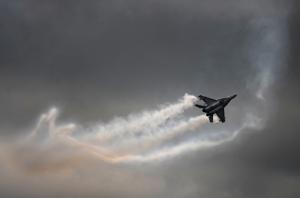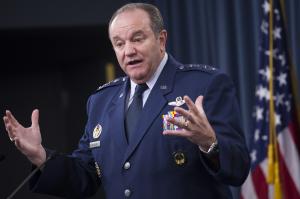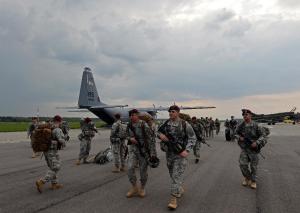Washington (AFP) - Russia's recent military flights into European airspace are meant to demonstrate to the West that the country is a "great power," NATO's supreme allied commander said on Monday.
"My opinion is they're messaging us. They're messaging us that they are a great power," Breedlove said.Although there has been an increase in Russian air activity over Europe during the past year, last week marked the first time Moscow had sent in larger formations of warplanes, General Philip Breedlove told reporters.
Moscow wanted to show it can exert influence on the alliance's calculations, he said.
NATO last week reported a series of flights by Russian fighter jets, long-range bombers and tanker aircraft over the Baltics, North Sea and Atlantic Ocean, days before a controversial election held by pro-Moscow separatists in eastern Ukraine on Sunday.
NATO fighter jets quickly intercepted the Russian planes and escorted them out of European airspace without incident.
In the past, Russian flights were carried out by small groups of one or two aircraft, he said.
"And what you saw this past week was a larger, more complex formation of aircraft, carrying out a little deeper -- I would say a little bit more provocative flight path," the US general said.
The flights were cause for "concern" and "do not add to or contribute to a secure and stable situation."
Russian naval forces also have taken similar provocative steps over the past year in the Black Sea, the North Sea and even in the Pacific Ocean, Breedlove said.
The head of NATO forces and top US general in Europe spoke a day after controversial elections held by pro-Russian separatists in eastern Ukraine, which have been denounced as illegitimate by the United States and European governments.
Breedlove said it was too early to say how the polls would affect the security situation in Ukraine, but he said the elections were opposed all along by the United States and that it was "not helpful" to efforts to end the conflict.
-- More US troop deployments --
Citing a "revanchist Russia," Breedlove said he favored increasing the number of US troops in Eastern Europe on temporary deployments, in addition to measures already taken to reassure anxious partners on NATO's eastern border.
"Because of the increased pressure that we feel in Eastern Europe right now and because of the assurance measures that we're taking in the Baltics, in Poland, in Romania, we require additional rotational presence," he said.
There already have been modest reinforcements for aviation units in Europe flying C-130 cargo planes and F-16 fighter jets, he said.
Breedlove also said he has conferred with US military chiefs on the possibility of stationing more supplies and military hardware at key bases in Europe "to give us a more responsive capability if we were to need it in the future."
About 750 US troops are now in Poland and the Baltics from the 1st Brigade, 1st Cavalry Division, equipped with M-1 Abrams tanks and Bradley infantry armored vehicles. In a deployment meant to show solidarity with eastern NATO allies, the soldiers from the "Iron Horse brigade" out of Fort Hood, Texas, are on a three-month mission focused on training exercises with alliance members.
Since a ceasefire was agreed between Ukraine and pro-Russian separatists in September, fighting has continued but the line of demarcation between the two sides has solidified while the eastern border with Russia has "become completely porous," Breedlove said.
There has been no let-up in Russian supply convoys moving across the border into eastern Ukraine, he said.
Russian forces remain in place near Ukraine's border, with about seven battalions deployed in the area, down from a high of 18 battalions at one point, he said. There are roughly 800 to 1,000 soldiers in a Russian battalion.
Inside Ukraine, Russia has about 250-300 troops who are training and equipping the separatists, Breedlove said. VIDEO





